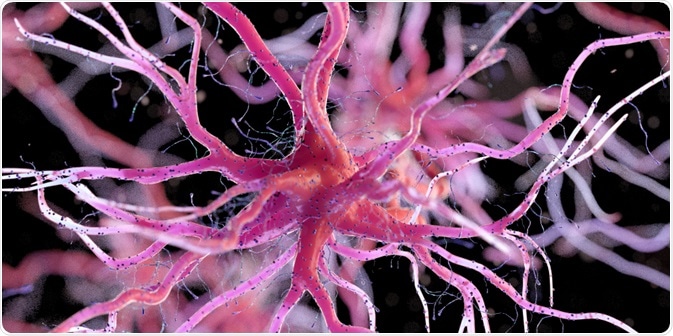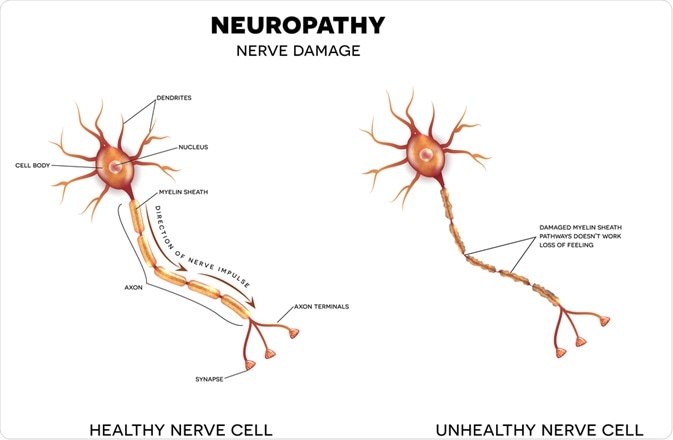Neuronopathy and neuropathy are both health conditions that involve abnormalities of the nervous system but are distinguished by a few important differences.

Image Credit: SciePro / Shutterstock.com
This article will describe the distinctive characteristics of both neuronopathy and neuropathy, in addition to explaining how the two conditions can be differentiated during the diagnostic process.
What is neuronopathy?
Neuronopathy is a form of polyneuropathy and occurs as a result of neuron degeneration. It is a subgroup of disorders of the peripheral nervous system (PNS) and involves the destruction of specific neurons in this area.
There are several types of neuronopathy, including sensory neuronopathy, also known as ganglionopathy, motor neuronopathy, and autonomic neuronopathy. Each of these types is characterized by damage to particular neurons in the PNS and can lead to a distinct set of resulting symptoms.
What is neuropathy?
On the other hand, neuropathy is a broader term used to describe any disease that affects the PNS. This includes disorders that affect the cell body of the neurons and neuronopathies.
 Image Credit: Tefi / Shutterstock.com
Image Credit: Tefi / Shutterstock.com
Each neuropathic disorder has specific clinical features that help to differentiate its cause and type. These disorders may be inherited from parents or acquired due to environmental circumstances, including other related medical conditions.
There are several primary types of neuropathy according to the type of nerves that are affected. These include sensory, motor, and autonomic neuropathies. A sensory neuropathy, for example, alters sensation and may cause symptoms of tingling, pain, numbness, or weakness of the limbs in affected individuals.
Comparatively, motor neuropathy affects strength and movement and may cause immobility or weakness of the limbs in affected individuals. Thirdly, autonomic neuropathy affects the control of smooth muscle in the body, such as in the gastrointestinal tract, bladder, and cardiovascular system.
Additionally, neuropathic disorders can be categorized as mononeuropathy if a single nerve is affected, or polyneuropathy if several nerves are affected.
Differential diagnosis
In some cases, it can be difficult to distinguish neuropathy from neuronopathy, both for the motor and sensory types of the condition. However, there are some defining features that can help in the differential diagnosis.
For example, many disorders of the nervous system are characterized by particular electroclinical features that can be used to identify differences between neuronopathy and neuropathy. For this reason, electrophysiological examinations may be used in the diagnostic process.
Other tests that may be used in the diagnosis of neuronopathy or neuropathy include nerve conduction studies, magnetic resonance imaging (MRI), and pathological analyses. Nerve conduction studies, in particular, are useful to show the changes in the action of the nerves involved in the condition, such as the symmetry of nervous responses.
Although we already have a reasonably good understanding of neuropathy and neuropathy, there is a need for further research in the area to classify the differences and improve the differential diagnostic testing methods.
Specific distinctions
The abnormalities of the nerve conduction and its resulting signs can help in the differentiation between motor neuropathy and motor neuronopathy.
In the reinnervation process, signs of terminal axonal reinnervation are evident in axonal neuronopathies. On the other hand, collateral reinnervation is evident in motor neuronopathies.
Electrophysiological findings that show length-dependent axonal damage is indicative of sensory axonopathy, whereas widespread deficits to the body are usually linked to sensory neuronopathy.
References
Further Reading